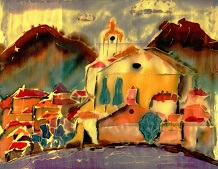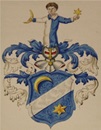 Safaris
Bergsteigen
Wandern
Inselwandern Weltweit
Safaris
Bergsteigen
Wandern
Inselwandern Weltweit
 Europa
Inselwandern
Europa
Inselwandern
 Städtewandern
Städtewandern
 Paintings
Paintings Dirk Rauschenbach
Dirk Rauschenbach
 Safaris
Bergsteigen
Wandern
Inselwandern Weltweit
Safaris
Bergsteigen
Wandern
Inselwandern Weltweit
|
 Europa
Inselwandern
Europa
Inselwandern
|
 Städtewandern
Städtewandern
|
 Paintings
Paintings |
 Dirk Rauschenbach
Dirk Rauschenbach
|
|
zurück Karibik Dominikanische Republik Santo Domingo
|
|
|
| Iglesia San Cristóbal de las Casas Santo Domingo | Christopher Columbus |
|
|
|
| Altstadt Santo Domingo | Altstadt Santo Domingo |
Santo DomingoThe Old Town features the New World's first street
(Calle Las Damas), fortress (Ozama fortress), sundial and Cathedral
(Catedral Primada de América), among others, as well as many old churches,
el Alcázar de Colón (Diego Columbus' house), el Museo de las Casas Reales
(Museum of the Royal Houses), the Amber Museum, etc.
|
Santo Domingo
This zoo, inaugurated in 1975, is home to big cats, the white
rhino, hippos, monkeys, birds, etc. Before you used to see endemic animals
of this island like the Solenodon (Solenodon paradoxus) but for now the only
endemic animal in exhibition is Boa de la Hispaniola (Hispaniola boa
constrictor). Some cool animals you'll see are Guaraguaos (hawk like birds),
Paloma Ceniza (pigeons with ash colored feathers), Australian emus and
ostriches, South American ñandús, ponies, etc. The biggest attraction of the zoo right now are the Chimps Maria and Toby. Before it used to be an Asian female elephant called Mami (mommy) but I understand she past away of natural causes. A lot of families use the zoo as a Saturday or Sunday excursion, where they can bring their own food and drinks and spend the day peacefully while the kids get rid of all the energy at the children's play area but the park isn't as well kept as the Botanical Garden and that's a shame. Practical info: we got lost finding the place because there were very few signs, so I'd recommend you take a cab. The entrance fee for all non Dominicans is 5US or the equivalent in pesos, 50 pesos for all Dominicans and in the entrance fee a 15-minute train ride is included although the guide speaks and the signs are written only in Spanish. Notice that it's forbidden to feed the animals, to bring skateboards, inline (and otherwise) skates and radios/boom boxes. Open Tue-Sun 9am-5pm. |
Jardín Botánico -
Botanical Garden: Jardín Botánico The
Botanical Garden has been a must for nature lovers and everyone who wants to
have peace within chaos in the city since its opening in 1976 during the
government of Dr. Joaquín Balaguer. It houses one of the biggest flower
clocks in the world (according to their website), a lovely Japanese garden,
a section with native plants of the island of Hispaniola, aquatic plants,
orchids, a museum with dissected exemplars of plants and a palm area. Don't
miss their Japanese garden with its soft grass and the loveliness of the
trees.
|
| Plaza
de la Bandera he monument, Plaza
de la Bandera (The Square of the Flag), is situated at the end of the
important road "27 de Febrero". Around the square there are several
government buildings. |
Calle
El Conde - El Conde street: El Conde
his tip about El Conde could also be a shopping
tip, because El Conde is one of the oldest streets in Santo Domingo - and
still among the city's most popular commercial centers. |
Palacio
Nacional
On a walk through Santo Domingo, we passed the
Palacio Nacional - the office of the president (2008: Doctor Leonel
Fernández). The palace is located east of the Plaza de la Cultura. |
| Reloj
del sol - Sundial: Reloj del Sol
Reloj del Sol (Clock of the Sun) is located just outside Museo de las Casas
Reales at Plaza España. |
Plaza de la Cultura: Museo del
Hombre Dominicano
Long before Columbus set foot in the Dominican
Republic, the island was home to several native tribes - especially the
Taino Indians. Museo del Hombre Dominicano (Museum of the Dominican Man)
displays the country's cultural evolution from pre-historic time to present
time through a variety of pre-Columbian and Spanish colonial artifacts.
There are furthermore special exhibitions about the African slavery,
carnival costumes and the voodoo tradition in the Dominican Republic. |
Acuario Nacional -
The Aquarium: Acuario National
Acuario National (the National Aquarium) - opened
in 1990 – is claimed to be one of the better aquariums in the Caribbean. I
don’t know if that’s true, but I think the National Aquarium in Santo
Domingo is a great place to spend a couple of hours. |
|
Fortaleza Ozama -
Ozama Fortress: Fortaleza Ozama
Fortaleza Ozama was built in 1502 and this
impressive fort is the oldest military structure in the New World.
|
Museo de las Casas
Reales - Royal Houses Museum: Museo de las Casas Reales
Museo de las Casas Reales (The Museum of the Royal
Houses) was built in the beginning of the 16th century. |
Pantéon Nacional - Pantheon: Panteón Nacional
Panteón Nacional (the National Mausoleum) was built
between 1714 and 1745, originally as a Jesuit church (Iglesia de los
Padres). During the church’s history it has been used as a tobacco
warehouse, housing for the San Fernando seminary, public offices and a
theatre for the independence fighters in 1860. |
| Los Tres Ojos - The 3
Eyes National Park: Los Tres Ojos Los Tres
Ojos (The Three Eyes) is several caves beneath the earth. In the caves there
are three/four freshwater lagoons (the eyes) and many stalactites and
stalagmites (I have just learnt that stalactite is above, and hangs downward
- the stalagmite is below and sticks up…). In the caves you follow walkways and a pulley-powered vessel to get through the underground system. The last of the “eyes” offers a spectacular natural landscape of tropical vegetation, sheer rock faces, and green-tinged water. The Taino Indians have used the caves for religious ceremonies. Los Tres Ojos is located not far from El Faro. |
Faro a Colón -
Columbus Lighthouse: El Faro a Colón l
Faro a Colón (Columbus Lighthouse) was completed in 1992 - to the 500th
anniversary of Columbus' discovery of America. Inside the monument there is
a mausoleum of Christopher Columbus, but are the remains of Columbus here -
or in Sevilla - or both places? I don't know...
|
Zona Colonial - Old
Town: Zona Colonial Zona Colonial is the
old city of Santo Domingo. The area was renovated in the 1980s and is now
declared as a World Heritage Site by UNESCO. |
|
Catedral Primada de América - The Cathedral: Catedral Santa María de la
Encarnación
The cathedral is the oldest church in the West
Indies. The construction began around 1521, but was not finished before 1540
– maybe because the Spanish searched for gold outside Santo Domingo. |
Zona Colonial - Old Town: Iglesia de los Padres Jesuitas y Panteon Nacional
walked across and down to Calle Las Damas and to see the Changing of the Guard in the mausoleum which occurs at noon every day. This is the National Pantheon (The name translated to English means "A Church run by the Jesuit Fathers and National Pantheon") which was built in the early 1700s (some say as early as 1714, some say it was in use in 1747, and others say it was not finished until 1755) as a Jesuit church by Geronimo Quezada y Garçon |
Catedral Primada de América - The
Cathedral: Cathedral
Fortaleza Ozama - Ozama Fortress: Fort and Calle las Damas Zona Colonial - Old Town: Old Town: Casa de Bastidas (House of Bastidas) Parque Colón - Columbus Square: Old Town: Parque Colón (Columbus' Park) Boulevard 27 de Febrero Old Town churches: Convento de los Dominicos Calle El Conde - El Conde street: Take a stroll on Calle El Conde Parque Independencia: Old Town: Puerta del Conde & Altar de la Patria |
![]() 26.07.25 Copyright Dirk
Rauschenbach Koelnerstrasse 293 51702 Bergneustadt
Datenschutzerklaerung 02261 9788972 Mail ccooly(
at) web.de
26.07.25 Copyright Dirk
Rauschenbach Koelnerstrasse 293 51702 Bergneustadt
Datenschutzerklaerung 02261 9788972 Mail ccooly(
at) web.de